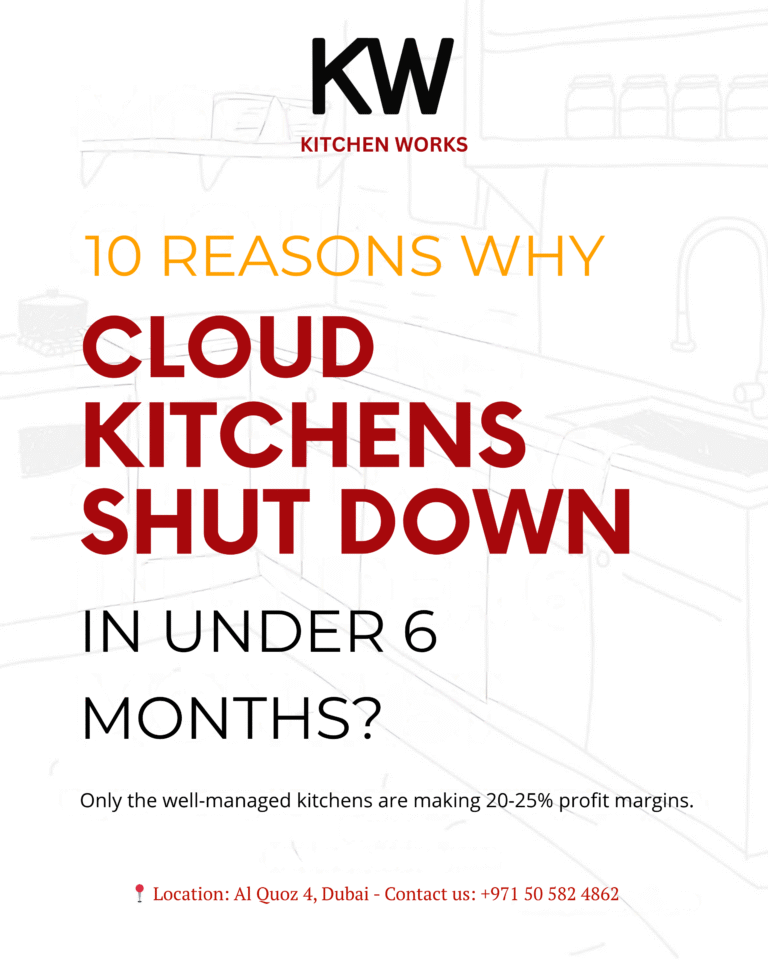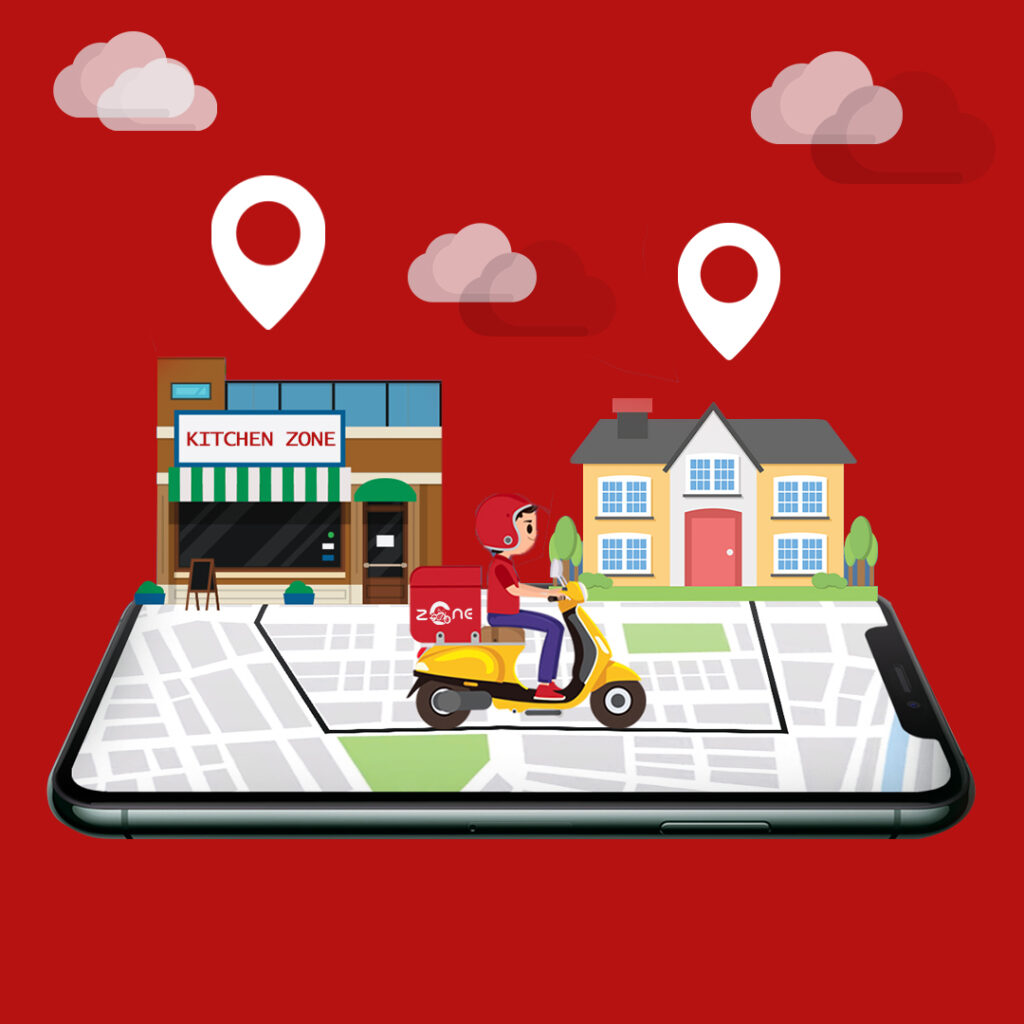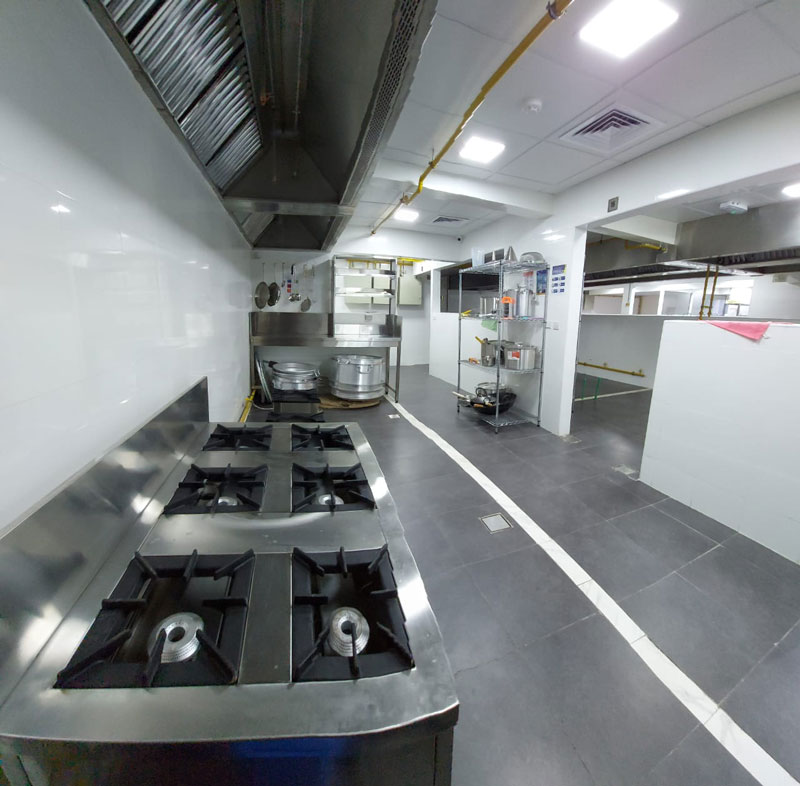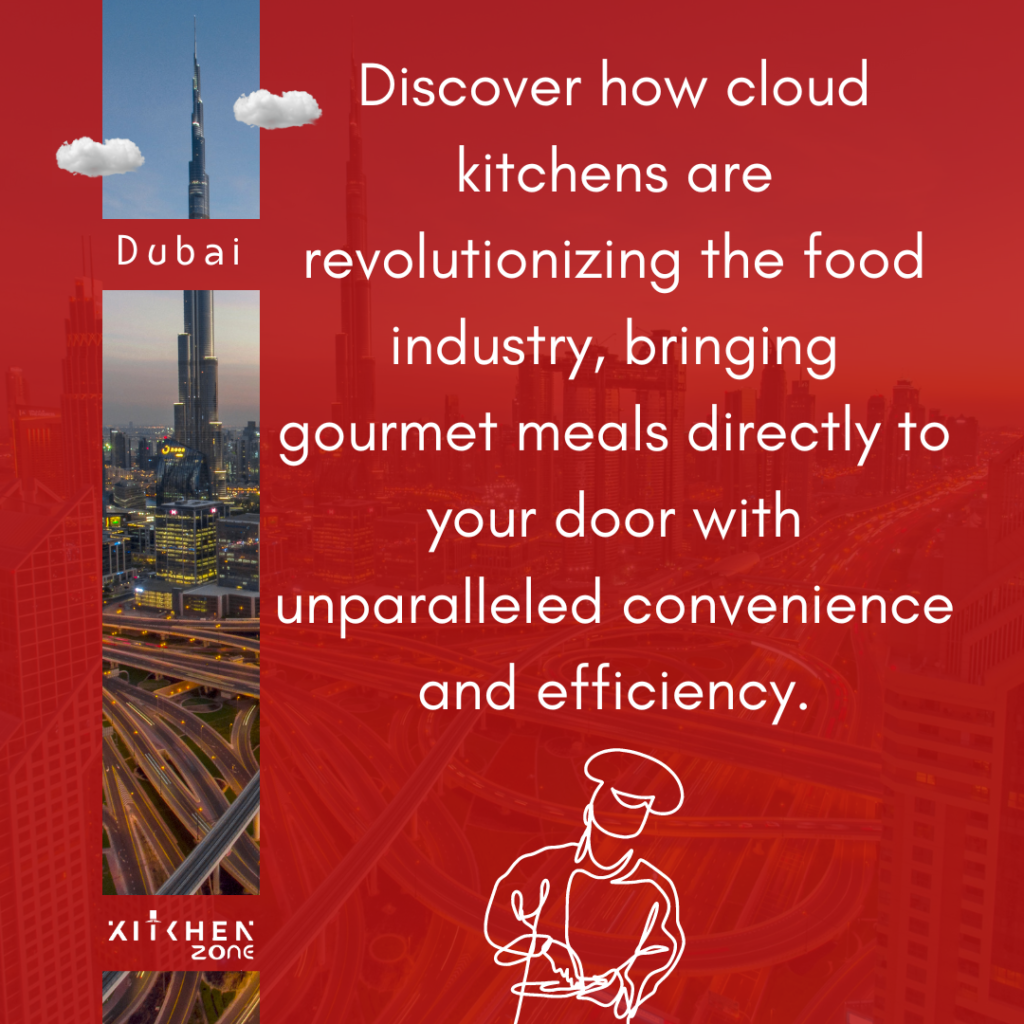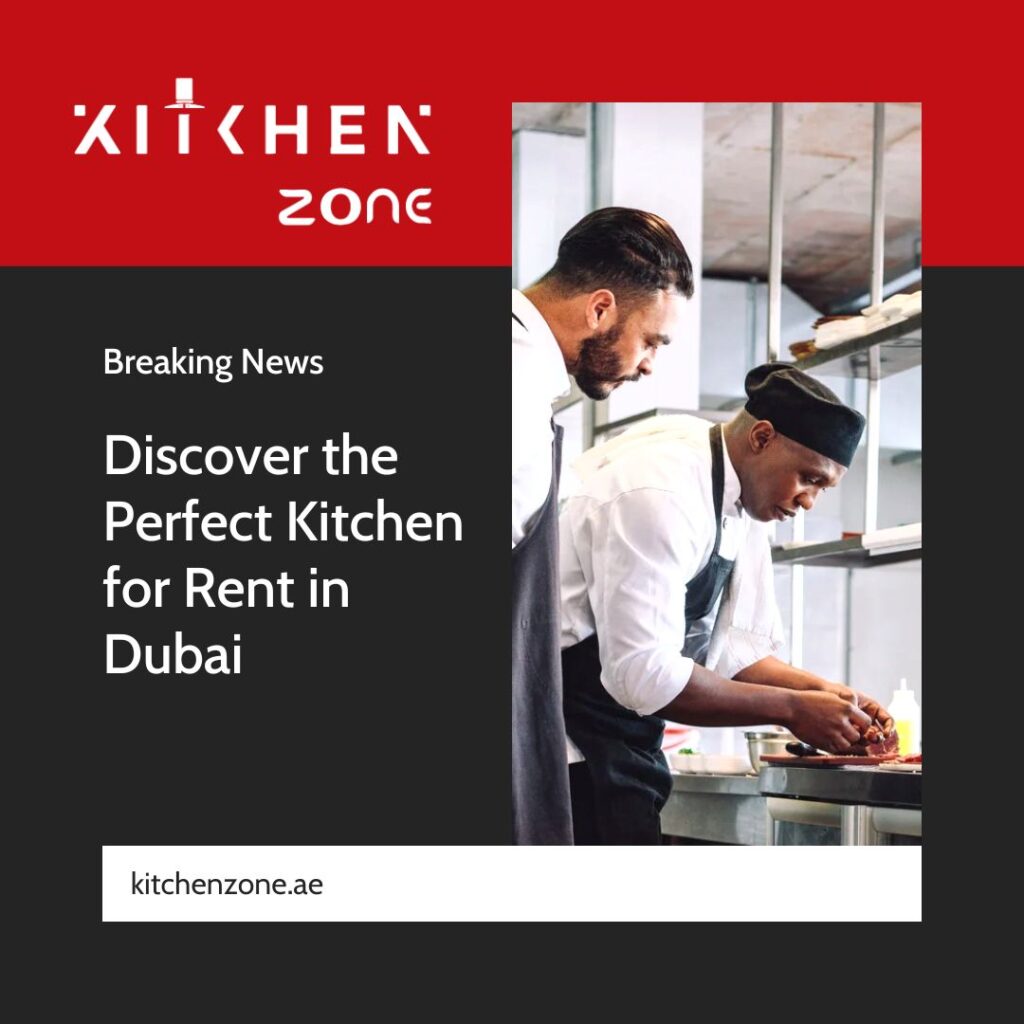Table of Contents
- Introduction
- The Promise and the Pitfall of Cloud Kitchens in Dubai
- 1. High Competition & Market Saturation
- 2. Dependency on Delivery Aggregators with High Commission
- 3. Overheads, Hidden Costs & Inadequate Planning
- 4. Branding & Customer Loyalty Challenges
- 5. Food Quality, Packaging & Delivery Logistics
- 6. Poor Location/Delivery Radius Strategy
- 7. Multi-Brand Model Complexity
- 8. Regulatory & Compliance Challenges
- 9. Cash Flow & Ramp-Up Pressure
- 10. Consumer Behavior and Branding Mis-match
- How Kitchen Works Helps You Avoid These Pitfalls
- Key Lessons & Checklist Before Launching
- Conclusion
Introduction
If you’re exploring the world of cloud kitchens in Dubai, you may notice a striking pattern: many of them close their doors (or rather cease operations) in under six months. At Kitchen Works, based here in Dubai, we’ve seen this scenario often — and we believe it’s important to understand why this happens so that new operators and investors can avoid repeating the same mistakes.
In this blog post, we dive deep into the main reasons why cloud kitchens in Dubai shut down so quickly. We use local/industry data, real-world anecdotes and strategic analysis. If you’re launching or supporting a kitchen-only delivery business in Dubai, this insight can save you time, money and reputation.
The Promise and the Pitfall of Cloud Kitchens in Dubai
The term cloud kitchens in Dubai is often used to describe delivery-only kitchens or virtual brands that operate without dine-in space. The model promises lower overheads, flexible location, and the ability to tap into the booming food-delivery market.
However, many operators discover that the promise is easier to talk about than to deliver. In fact, the collapse rate in the early months is high. Below we examine the top reasons.
1. High Competition & Market Saturation
Why it matters
One of the most frequently cited challenges for cloud kitchens in Dubai is the intense competition and saturation of the market. According to a guide on the Dubai market:
“High competition: The food delivery market in Dubai is highly competitive, making it challenging to stand out among numerous cloud kitchen operators.”
When dozens (or hundreds) of delivery-only kitchens operate in the same zones, each vying for visibility on aggregator platforms, brand differentiation becomes hard, margins shrink, and customer loyalty is elusive.
Real-world implications
- Many Cloud kitchens in dubai launch without a clear unique value proposition; they simply replicate generic cuisines delivered in the same areas where dozens of similar menus exist.
- On delivery platforms the same cuisine type, price point and delivery radius means your brand becomes “just another option”.
- With no dine-in traffic to rely on, visibility depends entirely on discovery via apps or third-party marketing — which is expensive and tough to sustain.
Why it leads to shutdown
Because competition is high and margins thin, if your marketing spend, delivery visibility, and customer retention don’t pick up quickly, the kitchen’s revenue falls short of covering fixed costs (rent, utilities, staff) and you shut down.
2. Dependency on Delivery Aggregators with High Commission
Why it matters
The business model for cloud kitchens in Dubai heavily relies on third-party delivery platforms (such as Talabat, Deliveroo, etc.) for reaching customers. However, the commission rates and dependency on these platforms can severely impact profitability. For example:
“The increased number of cloud kitchens in Dubai has germinated the problem of high commission charged by food aggregators… Deliveroo charges 30-35 percent while Talabat charges around 20-25 percent of the total order bill as commission.”
Real-world implications
- With 20-35% of order value going to aggregators, your effective margin is reduced substantially.
- You have little control over the customer relationship (data, retention) because the third-party drives visibility and sometimes delivery.
- The algorithmic placement on these apps can fluctuate, meaning your brand’s visibility may vary week to week, making revenue unpredictable.
Why it leads to shutdown
When your margins are thin and you rely heavily on aggregators, any drop in orders, increase in cost (delivery, packaging, utilities) or unfavorable placement on platform reduces revenue. Owners often realize the business isn’t viable and shut down within six months rather than continue bleeding money.
3. Overheads, Hidden Costs & Inadequate Planning
Why it matters
While one of the attractions of cloud kitchens in Dubai is lower setup cost (no dining room, fewer staff, simpler décor), there are still substantial overheads, which are sometimes underestimated. According to a setup guide:
“Since you don’t need a dine-in area … the cloud kitchens in dubai should be smaller … However … you’ll need enough room for cooking equipment, storage, a dedicated area for food packaging and pickup.”
Also, hidden or overlooked costs include licensing, utilities (in Dubai heat zones), waste disposal, ventilation, packaging, delivery logistics, marketing, etc.
Real-world implications
- Rent in strategic delivery zones (close to high-order density areas) can still be high.
- Packaging quality (to keep food hot/cold during delivery) may require elevated cost.
- Utilities in Dubai (especially summer cooling, exhaust systems) tend to be expensive.
- Initial months may have poor order volume while marketing builds, meaning cash-flow is tight.
Why it leads to shutdown
If projected revenue doesn’t ramp up quickly, those overheads become unsustainable. Kitchens that don’t achieve break-even within the first few months often decide to shut down rather than continue accumulating losses.
4. Branding & Customer Loyalty Challenges
Why it matters
Unlike traditional restaurants, cloud kitchens in Dubai lack a visible storefront, in-person service or ambiance. They rely purely on the delivery experience. This makes building strong brand recognition and loyalty harder. As one source puts it:
“Brand Building & Customer Connection: Without a physical presence, building brand awareness, customer loyalty, and a distinct identity can be difficult.”
Real-world implications
- Customers may try your brand once, but repeat orders depend on consistent food quality plus trust — which is harder if you have no visible location or proof of reliability.
- You’re competing on price, speed, and app ranking more than on experience — which compresses margins.
- Negative reviews travel fast in delivery model; one bad order may cause lasting damage.
Why it leads to shutdown
Lack of repeat customers means reliance on continuous acquisition, which costs money. If you can’t build retention and you’re spending heavily to get first-time orders, the model becomes unsustainable.
5. Food Quality, Packaging & Delivery Logistics
Why it matters
In a model where food must go from kitchen to doorstep, often in hot weather and through traffic, quality control becomes complex. According to a UAE SME source:
“Cloud kitchens in dubai … face issues around quality and consistency … Teams need to be small, highly trained … The climatic conditions, transportation and logistics … are specific challenges in the UAE.”
Real-world implications
- Menus need to be engineered for delivery (dishes that travel well, resist sogginess).
- Packaging must maintain temperature and presentation.
- Delivery times must be tightly controlled; delays degrade food and review ratings.
- Shared kitchen space (common in cloud kitchens) may lead to cross-brand issues, staff fatigue, lack of speciality knowledge.
Why it leads to shutdown
If customers receive sub-par experience (cold food, soggy fries, long wait), they won’t reorder. Bad ratings reduce your visibility on aggregator platforms, which reduces orders. Without enough volume, you cannot cover fixed costs — so closure follows.
6. Poor Location/Delivery Radius Strategy
Why it matters
While cloud kitchens in dubai don’t need expensive dine-in real-estate, location still matters — especially relative to your delivery radius. One guide states:
“Delivery radius limitations: Kitchens are bound by a 3-5 mile radius. Being in the wrong location can limit your customer base.”
Real-world implications
- If you are located too far from your target customer zones, you may incur longer delivery times, increased courier cost and lower service quality.
- If your delivery area overlaps with many competitors, you may struggle to win orders.
- Strategic placement (e.g., near densely populated residential areas with high delivery demand) is critical.
Why it leads to shutdown
A poorly placed kitchen may never achieve sufficient order volume to make the economics work. If your courier costs, time-to-delivery or marketing need to compensate for location disadvantage, you may shut down rapidly.
7. Multi-Brand Model Complexity
Why it matters
Some operators adopt a strategy of hosting multiple virtual brands from one kitchen to maximize utilization. While this seems efficient, it introduces complexity. Research shows:
“Operational Complexity of Multi-Brand Strategies … managing varied menus under one roof strains kitchen staff, risks inconsistent quality, and inflates inventory costs.”
Real-world implications
- Multiple cuisines = multiple ingredient sets, packaging types, training needs, kitchen flow changes.
- If one brand is weak, it drags down the kitchen’s reputation, delivery ratings, and overall profitability.
- Customers may feel the brand lacks clarity or target, reducing repeat order rate.
Why it leads to shutdown
When multi-brand operations fail to scale or maintain quality, costs go up and revenues stagnate. Many cloud kitchens in dubai find that instead of multiple brand breadth, they should focus on one strong brand. Without results, they shut down.
8. Regulatory & Compliance Challenges
Why it matters
Operating food businesses in Dubai (and UAE) requires strict compliance with licensing, food safety, hygiene, and health regulations. A case study:
“We audited facilities of several cloud kitchens in dubai … one supplier wasn’t up to standard … in the heat of summer, food was being prepared in an environment where conditions weren’t up to our production standards.”
Real-world implications
- Non-compliance can lead to fines, closure, licence suspension.
- Good venting, HACCP systems, ingredient traceability, packaging integrity are all required.
- In a cloud kitchen environment, small mistakes (especially in delivery context) can damage brand reputation quickly.
Why it leads to shutdown
A new operator may underestimate regulatory costs (hygiene, audits, inspection) and find they cannot maintain standards alongside marketing, growth, cost control. The business collapses.
9. Cash Flow & Ramp-Up Pressure
Why it matters
Even though the cloud kitchen model promises lower entry cost, it still requires capital for setup, marketing, initial months of low volume. According to set-up data in Dubai:
“Initial Setup Cost … may range from AED 50,000 to AED 100,000. Rent for Cloud Kitchens in dubai … shared kitchen space can start from AED 5,000 per month.”
Real-world implications
- It usually takes time to scale orders. If you don’t have margin cushion or marketing budget, the first few months may be loss-making.
- If you scale too quickly without controls, you may burn cash on inefficient menus, high discounting, excessive commissions.
- Many kitchens don’t plan for 6-12 month ramp up, expecting immediate profit; when that fails, owner loses patience.
Why it leads to shutdown
Operators who realize they will hit profitability only after many months – but cannot sustain losses or negative cash flow – will decide to shut down rather than wait.
10. Consumer Behaviour and Branding Mis-match
Why it matters
The delivery-only model means you depend entirely on what users see through apps, their reviews and perceived value. According to one industry commentary:
“Getting that visibility is extremely challenging … You’re not increasing your cost of operations … but those without the discounts will lose the orders.”
Real-world implications
- If your pricing is high but customer perceives little value (because no dine-in experience, no brand story), you fail to convert repeat orders.
- If you rely heavily on discounts (to compete), you train customers to expect lower price, which erodes margin.
- If your menu is too broad or unclear, you risk being “jack of many cuisines, master of none”.
Why it leads to shutdown
If there’s mis-match between consumer expectation (fast, quality, affordable) and your delivery-only brand, you lose out. Poor repeat rate, weak reviews, high marketing cost → failure.
How Kitchen Works Helps You Avoid These Pitfalls
At Kitchen Works, we specialise in helping entrepreneurs and brands launch cloud kitchens in Dubai in a way that avoids these common failure traps. Here’s how we assist:
- Location strategy: We analyze delivery heat-maps, radius optimization and competitor saturation to select a site with strong order potential. The location is the key factor to maintain the cloud kitchens in Dubai.
- Menu engineering for delivery: We help craft menus that travel well, optimise packaging, standardise processes and ensure consistent quality.
- Aggregator & direct-channel mix: We guide you on balancing aggregator dependency with direct ordering channels to protect margin.
- Brand & marketing support: We support building a strong online brand identity, retention programs, customer loyalty via digital channels, to grow the cloud kitchens in dubai.
- Operational cost modelling: We prepare realistic financial models including initial setup, overheads, ramp-up phase, break-even milestones.
- Quality assurance & compliance: We ensure your kitchen meets food safety/hygiene/licensing requirements so you’re audit-ready from day one.
- Technology integration: We help implement POS/KDS systems, delivery tracking, analytics so you monitor performance of cloud kitchens in Dubai.
With the right setup and support, a cloud kitchen can succeed. The difference is often preparation and execution, rather than just concept.
Key Lessons & Checklist Before Launching
Here’s a practical checklist for anyone considering entering the cloud kitchens in Dubai market:
- Define your niche clearly – don’t try to be everything to everyone.
- Select your location wisely – near high-density residential areas, with manageable delivery radius and low overlap.
- Build your brand on delivery-friendly metrics – speed, quality, packaging, value.
- Don’t over-depend on aggregators – negotiate commission terms, track performance and build your own channel.
- Design menu for delivery – items must hold quality in transit; test repeatedly.
- Prepare financial runway – expect 3-6 months of low or break-even volumes; have cash buffer.
- Ensure operations scale – staffing, equipment, kitchen design, packing must support growth.
- Monitor metrics daily – customer reviews, repeat rate, food cost, delivery cost, marketing cost.
- Guarantee compliance – hygiene, licensing, packaging, waste handling.
- Stay agile – iterate your menu, brand, pricing based on data and feedback.
Conclusion
While the concept of cloud kitchens in Dubai holds enormous promise — lower upfront cost, scalability, convenience — the reality is that many such ventures shut down within six months because of the factors we’ve discussed above: intense competition, aggregator dependency, underestimated costs, branding difficulties, operational complexity and cash-flow pressure.
At Kitchen Works, we believe that with the right planning, execution and support, a cloud kitchen can succeed and thrive in Dubai’s dynamic delivery market. The key is to recognise the pitfalls before you launch and build the business model accordingly.
If you’d like expert help or consultation on launching cloud kitchens in Dubai, we’d be delighted to assist you. Don’t let the six-month shutdown statistic become your story — plan for success, not for closure.
Thank you for reading. If you found this helpful, feel free to share or contact us at Kitchen Works for further guidance.

